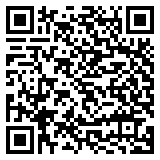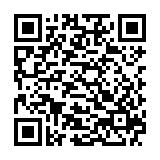When we hear the word computer, we instantly picture sleek devices, AI tools, or complex software. But here’s a twist—once upon a time, a computer wasn’t a machine at all. It was a person. And yes, pre-tech interpreting and translation was where the real magic happened!
This fun bit of etymology isn’t just interesting trivia—it tells us something deeper about language, human ability, and the ever-evolving relationship between technology and communication. And for those of us in the interpreting industry, it offers a timely reminder: machines are powerful—but language is, at its core, profoundly human.
Let’s dig into the word’s past—and explore what it means for the future of interpreting.
Pre-Tech Interpreting: When “Computer” Meant a Human Brain
Back in the 1600s, if someone called you a computer, they weren’t saying you were good with gadgets. They meant you were great with math. The word computer was a job title—often given to individuals (many of them women) who manually performed calculations for science, engineering, and astronomy.
The term comes from Latin computare, meaning “to reckon together”—and for centuries, computers were actual people who did just that: they reckoned, calculated, and solved.
Only in the 20th century, as machines began to automate these tasks, did the word shift to describe a device rather than a person.
Language Evolves. But People Stay at the Centre.
The evolution of computer from human to machine mirrors a broader story. It’s the same narrative we’re seeing in language services today.
As technology advances—with AI translation tools, speech recognition software, and even remote interpreting platforms—we’re seeing incredible changes in how language is processed, delivered, and accessed.
But here’s the twist: just like the human computers of the past, human interpreters remain essential.
Because interpreting isn’t just about word-for-word substitution. It’s about:
- Tone
- Context
- Emotion
- Cultural nuance
- Real-time decision-making
And that level of depth? Machines are still learning.
Why Interpreters Matter—Now More Than Ever
Just as early engineers couldn’t launch rockets without skilled human computers, global businesses, governments, and healthcare systems can’t function effectively across languages without skilled interpreters.
In moments that matter—legal hearings, medical emergencies, international diplomacy—there’s no substitute for a trained professional who can read the room, feel the tension, and find the right word at the right moment.
Technology can assist, but interpretation is an art.
And it’s powered by people.
Man + Machine: A Winning Partnership
Now, don’t get us wrong—technology has a powerful role in interpreting.
At Day Interpreting, we embrace platforms and tools that make interpretation faster, more accessible, and more scalable. We offer remote interpreting, video interpreting, and even AI-assisted tools.
But always with human expertise at the core.
Just as early machines worked alongside human computers before eventually replacing them for simple calculations, interpreting tools today should support—not replace—the interpreter.
Because when accuracy, emotion, and cultural connection are on the line, only a human can fully deliver.
The Future Is Human-Led, Tech-Supported
The origin of the word computer is a humble one. It reminds us that behind every machine, there was once a human mind making it all happen.
And in the interpreting world, that truth remains.
Whether interpreting in a courtroom, a hospital room, or over Zoom, real communication still requires real people.
At Day Interpreting, we’re proud to blend cutting-edge tools with professional interpreters to ensure every message crosses borders—clearly, accurately, and with cultural care.
Want to learn more about our interpreting services or explore how human-led language support can power your business? Get in touch with us today! Let’s keep the conversation—and the meaning—clear.





0 Comments